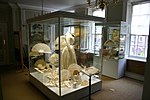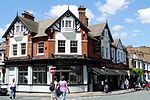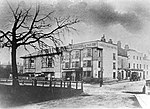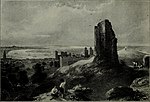Our Ladye Star of the Sea
Grade II* listed Roman Catholic churches in EnglandGrade II* listed buildings in the Royal Borough of GreenwichGrade II* listed churches in LondonHistory of the Royal Borough of GreenwichUse British English from March 2023
The Church of Our Ladye Star of the Sea is a Roman Catholic church situated south of Greenwich town centre on the west side of Croom's Hill, and west of Greenwich Park in southeast London. Today a Grade II* listed building, it was designed by William Wardell in a Decorated Gothic style, with a landmark spire, and with fittings and decorative elements designed by Augustus Pugin and his son E. W. Pugin. It was opened in 1851.
Excerpt from the Wikipedia article Our Ladye Star of the Sea (License: CC BY-SA 3.0, Authors).Our Ladye Star of the Sea
Crooms Hill, London East Greenwich (Royal Borough of Greenwich)
Geographical coordinates (GPS) Address Nearby Places Show on map
Geographical coordinates (GPS)
| Latitude | Longitude |
|---|---|
| N 51.4763 ° | E -0.0061 ° |
Address
Our Ladye Star of the Sea
Crooms Hill
SE10 8HD London, East Greenwich (Royal Borough of Greenwich)
England, United Kingdom
Open on Google Maps









